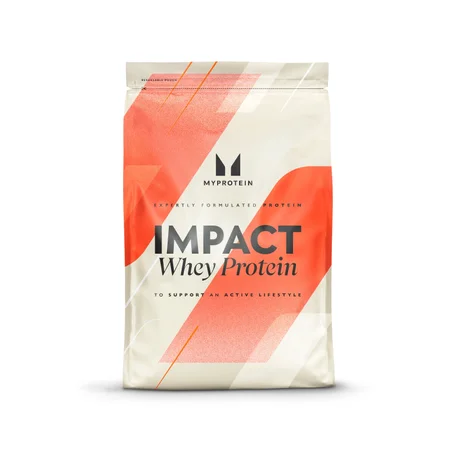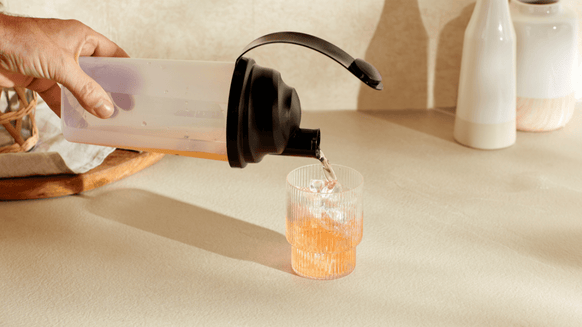Macro Calculator | How to Calculate Your Macros for Flexible Dieting and IIFYM

Picture this scenario, being able to eat a range of foods with no restriction that allows you to hit your goals whether it be building muscle, losing or maintaining weight. This sounds brilliant doesn’t it? Well, look no further — our macro calculator enables you to calculate the perfect nutrition plan so you can prepare for success.
Flexible dieting or IIFYM (If it fits your macros) is a popular nutritional intervention designed to give you the ability to pick and choose what you wish to eat in order to avoid going below or above your calorie intake in a day. Its flexibility is great in that it gives you the ability to enjoy social situations without needing to restrict yourself from enjoying alcohol or specific food groups.
Tell me more, tell me more…
In this article, you'll find:
Macro calculator
What are macros?
Calculate maintenance calories
Adjusting calories for weight loss or gain
Working out protein
Working out fat
Working out carbohydrate
What's IIFYM?
FAQs
What are macros?
For those of you who are new to this, “macros” is short for “macronutrients”, the nutrients found in large quantities that give us energy. The three main macronutrients are fat, protein and carbohydrate. Avoid getting these confused with micronutrients — these are vitamins and minerals found in food and consumed in small amounts.

Calculate Your Maintenance Calories
No matter what goal you have in mind, calculating your maintenance calories allows you to figure out how many calories you need to eat daily in order to maintain your weight. Everyone will have a slightly different amount of maintenance calories as it can vary with age, gender, activity level, and other factors.
The simplest way to estimate a good starting amount is by using the following equation:1
Men: BMR = (13.397 x Weight kg) + (4.799 x Height, cm) – (5.677 x Age) + 88.362
Women: BMR = (9.247 x Weight kg) + (3.098 x Height, cm) – (4.330 x Age) + 447.593
For example, if you’re a woman who weighs 63kg, your BMR (a.k.a. maintenance calories) should be somewhere between 1398-1400 calories.
Adjusting for weight-loss or weight-gain
As a rule of thumb, start by either subtracting 200-300kcals or adding 300-400kcals from your maintenance calories per day. See how you progress in the next few weeks and adjust calories accordingly depending on how fast or slow you are losing or gaining weight.
Try to avoid over-restricting your calories too much as this may lead you to lose lean body mass rather than fat.2
Set your protein target
For those of you who don’t know, protein is an important macronutrient that helps with muscle growth, repair, and to keep you fuller for longer. The recommendation of how much protein you require to maintain or increase muscle mass is between 1.0-1.2g of protein per kilogram of bodyweight.3 This range can differ depending on what your fitness outcome goal is, for example bodybuilding.4
For an individual who weighs 63kg, your daily protein intake would range between 63-75g per day. You may want to aim for a higher protein intake if you’re focusing on building muscle, or if you are losing weight, as this can help with maintaining muscle mass and helping to keep you fuller for longer.
| Food (100g) | Protein (g) | Calories (Kcal) |
| Steak | 30 | 183 |
| Chicken breast | 24 | 145 |
| Impact Whey Protein | 71 | 390 |
| Tofu | 12 | 118 |
| Salmon | 22 | 162 |
Don’t forget about dietary fat
It’s important to ensure you’re having enough fat in your diet as it has lots of beneficial functions, including regulating hormone levels and maintaining joint health that overall help with improving your body composition.5 The general recommendation is that your fat intake per day should equate to anywhere between 20-40% of your daily calorie level.5
So, 9kcals equal 1g of fat. For an individual who weighs 63kg with a 1400 calorie goal would need to consume between 280 and 560 calories worth of fat, which is between 280 / 9 = 31g of fat and 560 / 9 = 62g of fat.
Try focus on including more heart-healthy fats including olive oil, low-fat dairy, eggs, salmon and other omega-3 fats found in fish and nuts. If you want to have more carbohydrate-based foods such as bread, rice, pasta then you want to focus on the 20% end of the recommendation rather than 40%.
| Food | Fat (g) | Calories (Kcal) |
| Olive oil (10g) | 10 | 88 |
| 1 large egg | 10 | 143 |
| Half avocado | 12 | 120 |
| 1 tbsp. coconut oil | 13 | 121 |
| 100g salmon | 8 | 162 |
And what about Carbohydrates?
We can’t forget this particular food group as it’s the most important when it comes to giving us energy and replenishing our muscle glycogen stores during recovery post-exercise.
Once you have determined your protein and fat target, you want to find out how many grams of carbohydrates you can consume per day. So if 4kcals = 1g of carbohydrate. You want to then subtract your calorie intake from your protein and fat to determine how many grams of carbohydrates you will be eating.
So, for an individual who weighs 63kg with a 1400kcal goal, 70g of protein, 30g of fat, you will have left the following: 1200 – (70 x 4) – (30 x 9) = 650kcal that will come from carbohydrates, that equals 650 / 4 = 162g of carbohydrate.
| Food (100g) | Carbohydrate (g) | Calories (Kcal) |
| White bread | 49 | 265 |
| Brown rice | 72 | 349 |
| Potato | 17 | 77 |
| Quinoa | 26 | 143 |
| Sweet potato | 20 | 86 |
What’s If It Fits Your Macros (IIFYM)?
Wish you could eat whatever you wanted while on a diet? Well, theoretically, you can. If It Fits Your Macros (IIFYM) means eating all the food you want as long as it matches up with your macronutrient ratio and calorie limit. Simply calculate this above and then work out the quantities of each food that you can eat to match your desired calories and macros.

FAQs
How do you calculate alcohol into your macros?
Alcohol is not a macronutrient, but it still contains calories that are important to track. 1g of Alcohol = 7 calories. From your total amount of calories, try to always keep protein the same, but adjustcarbohydrate and fat accordingly. So, subtract the number of calories from alcohol and then re-calculate carbohydrates and fat as above.
Another alternative is to include it under your ‘Carbohydrates’ requirements. Remember that it is always best to drink alcohol responsibly and in moderation, especially when following a stricter diet plan.
Here is a quick example on the number of calories in common alcoholic drinks:
1 shot of spirit (vodka or gin) with diet lemonade = 80 calories 1 glass of wine, 5oz = 120 calories Cider/Beer 120z – 180-200 calories.
How do I manage my macros?
As long as you hit your calorie and protein requirements, when it comes to weight-loss you can alternate between different ranges for carbohydrates and fats. Think about your calorie intake throughout the week rather than on simply one day.
If you know you’ll be over-indulging a little on one particular day, estimate more or less how many calories you’ll need and subtract this by your total amount of calories in the week (to calculate this multiply your daily calorie goal by 7). With the number left over, subtract this by 6 to calculate what calories you have leftover across those 6 days.
So, for example, let’s say you’re aiming to have 1300 calories a day (9,100 calories a week) and you want to stay in a deficit to promote weight-loss. You estimate a dinner date to add your calories up to 2,500 calories in that day. Subtract 2,500 from 9,100 calories = 6,600 calories and divide by 6 = 1,100 calories per day. Alternatively, you could consider eating towards maintenance calories (~1600 calories) on that day, with a view that you may not necessarily lose or gain weight that week.
Should my macros be the same each day?
If your calories and protein are consistent, you can alternate between different amounts of carbohydrates and fats accordingly.
If your goal is losing weight, you want to ensure that you’re consistent with achieving a calorie deficit whilst ensuring adequate protein intake to help maintain muscle mass. If muscle gain is your aim, the same applies, but you want to instead be focusing on getting more calories in. It really is dependent on you as an individual and if you wish your diet to be slightly richer in carbohydrates or fats.
Should I track vegetable intake?
First of all, let’s make sure that we’re on the same page when it comes to what’s classified as a ‘vegetable’. Potatoes are not a vegetable and are considered a carbohydrate, so put the plate of fries down.
Vegetables in general are low in calories, rich in fibre, vitamins and minerals that are great for you. Don’t worry too much about tracking vegetable intake as consuming excess amounts won’t negatively impact on your ability to lose or gain weight.
What is the best macro ratio for fat loss?
So far, there’s no evidence available for one particular ‘best macro ratio’ for fat loss. The research suggests it’s optimal depending on what your personal preference is when it comes to food and what works best as a result of how active you are too.
As long as you aim for a good calorie deficit and optimal protein intake within a range of 1.0-1.2g/protein/kg/day, the ratio of carbohydrate and fat is really up to what you feel suits you best.
Take Home Message
It’s like having money in your bank account — many of us try our best to save as much money as we can whilst others give in and like to spend a lot. Regardless of what your fitness goal is, it all really does start in the kitchen. Knowing how many calories you require and the split across different macronutrients enables you to not only achieve your fitness goal, but also promote good health if you focus on good food sources.

Louise Bula is a UK Registered Dietitian with the Health and Care Professions Council. She has a Bachelor’s of Science in Nutrition and Food Science from the University of Reading and a Postgraduate Diploma in Dietetics from Queen Margaret University. Louise has a great amount of experience that spans from working as a research assistant for a study funded by the prestigious Medical Research Council looking into the effects of saturated fats on heart disease. She also has worked in the NHS as a Dietitian as part of various multidisciplinary teams providing patients with acute and chronic illnesses a range of nutritional interventions. She now specialises in Type‐2 Diabetes and works for a company providing patients’ care through a range of digital-based approaches. Louise also offers a private clinic overseas every month where she sees patients with a range of clinical conditions.
In her spare time, Louise enjoys weightlifting at the gym and cooking. Find out more about Louise’s experience here.
1. FAO/WHO/UNU (1985) Energy and protein requirements: Report of a joint FAO/WHO/UNU expert consultation. Geneva, Switzerland. pp.1–206.
2. Cava, E., Yeat, N., & Mittendorfer, B. (2017). Preserving Healthy Muscle during Weight Loss. Advances In Nutrition: An International Review Journal, 8(3), 511-519. doi: 10.3945/an.116.014506.
3. Deutz, N., Bauer, J., Barazzoni, R., Biolo, G., Boirie, Y., & Bosy-Westphal, A. et al. (2020). Protein intake and exercise for optimal muscle function with aging: Recommendations from the ESPEN Expert Group.
4. Helms, E., Aragon, A., & Fitschen, P. (2014). Evidence-based recommendations for natural bodybuilding contest preparation: nutrition and supplementation. Journal Of The International Society Of Sports Nutrition, 11(1). doi: 10.1186/1550-2783-11-20.
5. Liu, A., Ford, N., Hu, F., Zelman, K., Mozaffarian, D., & Kris-Etherton, P. (2017). A healthy approach to dietary fats: understanding the science and taking action to reduce consumer confusion. Nutrition Journal, 16(1). doi: 10.1186/s12937-017-0271-4







